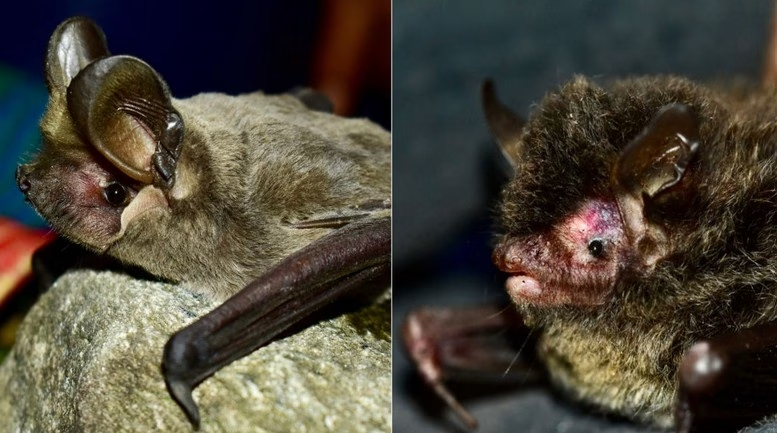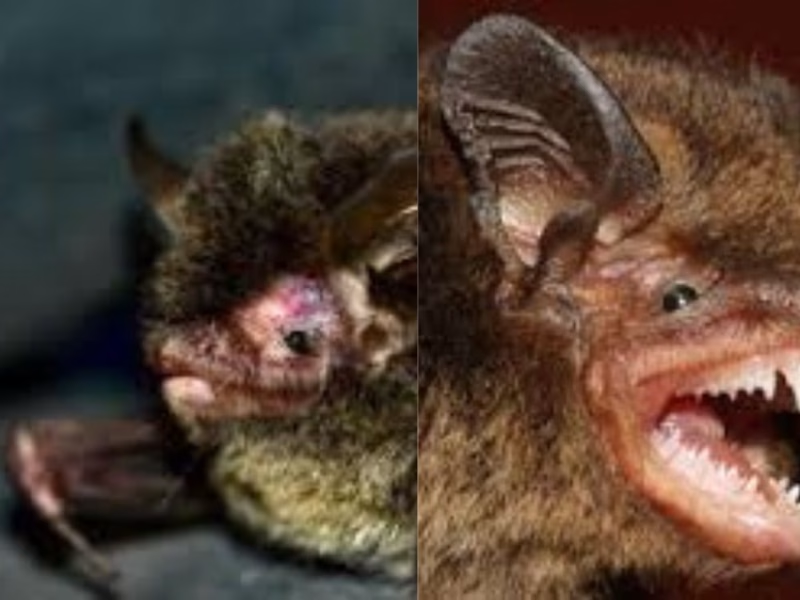A recent research suggests that a new species of bat has been discovered in the Western Himalayas.
The Himalayan mountain range, famed for its towering peaks and ecological richness, is also home to a lesser-known yet remarkable species — the Himalayan Long-Tailed Myotis (Myotis longicaudatus). First described scientifically in 2021, this bat represents a significant addition to the genus Myotis, widely known as the mouse-eared bats.
This blog delves into the taxonomy, morphology, habitat, ecological role, and conservation significance of this elusive chiropteran species.
Taxonomy and Nomenclature
- Common Name: Himalayan Long-Tailed Myotis
- Scientific Name: Myotis longicaudatus
- Described by: Ruedi et al., 2021
- Family: Vespertilionidae
- Genus: Myotis
The name longicaudatus derives from Latin, meaning “long-tailed,” in reference to the species’ relatively elongated caudal appendage — a distinguishing feature from closely related taxa within the genus.
Discovery and Scientific Significance
The species was discovered during the biodiversity survey in the eastern Himalayan region. This area is still scientifically under explored due to its difficult topography and harsh climate
The bat’s body structure, skull and dental structure showed differences from other Myotis species, leading scientists to suspect that it could be a new species. DNA analysis confirmed it was a novel species.
This finding proves that the Himalayan region is extremely rich in terms of biodiversity and still many species are outside our study.

Physical texture and characteristics
Although small in size, its texture has several distinctive characteristics:
Color: Soft, dense and brownish-grey hairs on the body
Size: Weight about 4 to 8 grams
Tail: longer than body, which distinguishes it from other Myotis species
Wings: Thin and membranous, adapted to fly efficiently in forests
Ear: Sharp and sensitive, enabling it to catch sound waves
Distribution area and residence:
This species is mainly found in the eastern Himalayan region:
Geographical Distribution of Himalayan Long-tailed Myotis:
- India (Arunachal Pradesh and Sikkim)
- Nepal
- Bhutan
Natural Habitat of Himalayan Long-tailed Myotis:
- High mountain forests
- Regions with cool and humid climates
- Caves, rock crevices, and hollow trees
These natural places not only provide the bat with safety and shelter, but also offer ample food sources like insects, making them ideal for its survival.
Diet and Behavior
Myotis longicaudatus is an insectivorous bat. Its diet includes:
- Moths
- Beetles
- Mosquitoes
- Other small flying insects
It uses echolocation to hunt:
- It emits high-frequency sound waves
- These waves bounce back after hitting objects
- The bat listens to these echoes to detect the position and movement
Reproduction and Social Behavior
Although specific research on this species is still in its early stages, based on other Myotis species, it is estimated that:
- Its reproduction is seasonal
- It may form maternity colonies in small groups
- Some bats exhibit processes like delayed fertilization
- More in-depth research is needed in this area
Conservation Status and Threats
This species has not yet been included in the IUCN Red List, but the following threats could affect its existence:
- Deforestation and destruction of habitats
- Climate change
- Loss of caves and natural shelters
- Human myths and superstitions
Considering its limited numbers and specific habitat needs, this species can be considered vulnerable.
Ecological Role
Bats play an extremely important role in the ecosystem:
- Natural pest control: They help protect crops
- Ecological indicators: They reflect the health of the environment
- Part of the food chain: They serve as food for owls, snakes, and carnivorous animals
Without bats, the number of insects could increase exponentially, causing ecological imbalance.
Research Possibilities
There is a need for detailed research on several aspects of this new species:
- Population size and distribution
- Genetic diversity
- Reproductive and social structure
- Response to environmental stress
Further study and monitoring are critically important in this direction.
Conclusion
The Himalayan Long-tailed Myotis is not just a new species — it’s a reminder that many mysteries still lie hidden on our planet. It emphasizes that investing in conservation and scientific discovery is essential not only for preserving biodiversity, but also for understanding the biological heritage of our Earth.
Frequently Asked Questions (FAQs)
1. What is the Himalayan Long-tailed Myotis?
The Himalayan Long-tailed Myotis is a rare species of bat found in the Himalayan regions. It is small in size, has a long tail, and belongs to the mouse-eared bat family.
2. Where is the Himalayan Long-tailed Myotis found?
It is mainly found in the Western Himalayas, including parts of India (Uttarakhand), Nepal, Bhutan, and Pakistan. It lives in high-altitude forests and caves.
3. What does the Himalayan Long-tailed Myotis eat?
It eats insects such as moths, beetles, mosquitoes, and other small flying bugs. It helps control insect populations naturally.
4. Why is this bat species important?
This bat plays a big role in maintaining the balance of nature by:
- Controlling insect pests
- Supporting forest health
- Helping in the food chain
5. Is the Himalayan Long-tailed Myotis dangerous to humans?
No, it is not dangerous. It is a shy, peaceful animal that avoids humans and helps the environment by eating harmful insects.
6. What kind of habitat does it live in?
It lives in:
- High mountain forests
- Cool and moist regions
- Caves, rock crevices, and hollow trees
These places provide safety and food.
7. Is the Himalayan Long-tailed Myotis an endangered species?
It is considered rare, and its population may be at risk due to habitat loss, deforestation, and human disturbance. Conservation efforts are needed.
8. How can we help protect this bat?
We can help by:
- Protecting forests and caves
- Avoiding pesticides
- Spreading awareness
- Supporting wildlife conservation
9. Does this bat sleep during the day?
Yes, like most bats, it is nocturnal, meaning it sleeps during the day and becomes active at night to hunt insects using echolocation.
10. Why is it called “Long-tailed”?
It has a long tail that extends beyond the wing membrane, which makes it different from many other bats in the same family.







